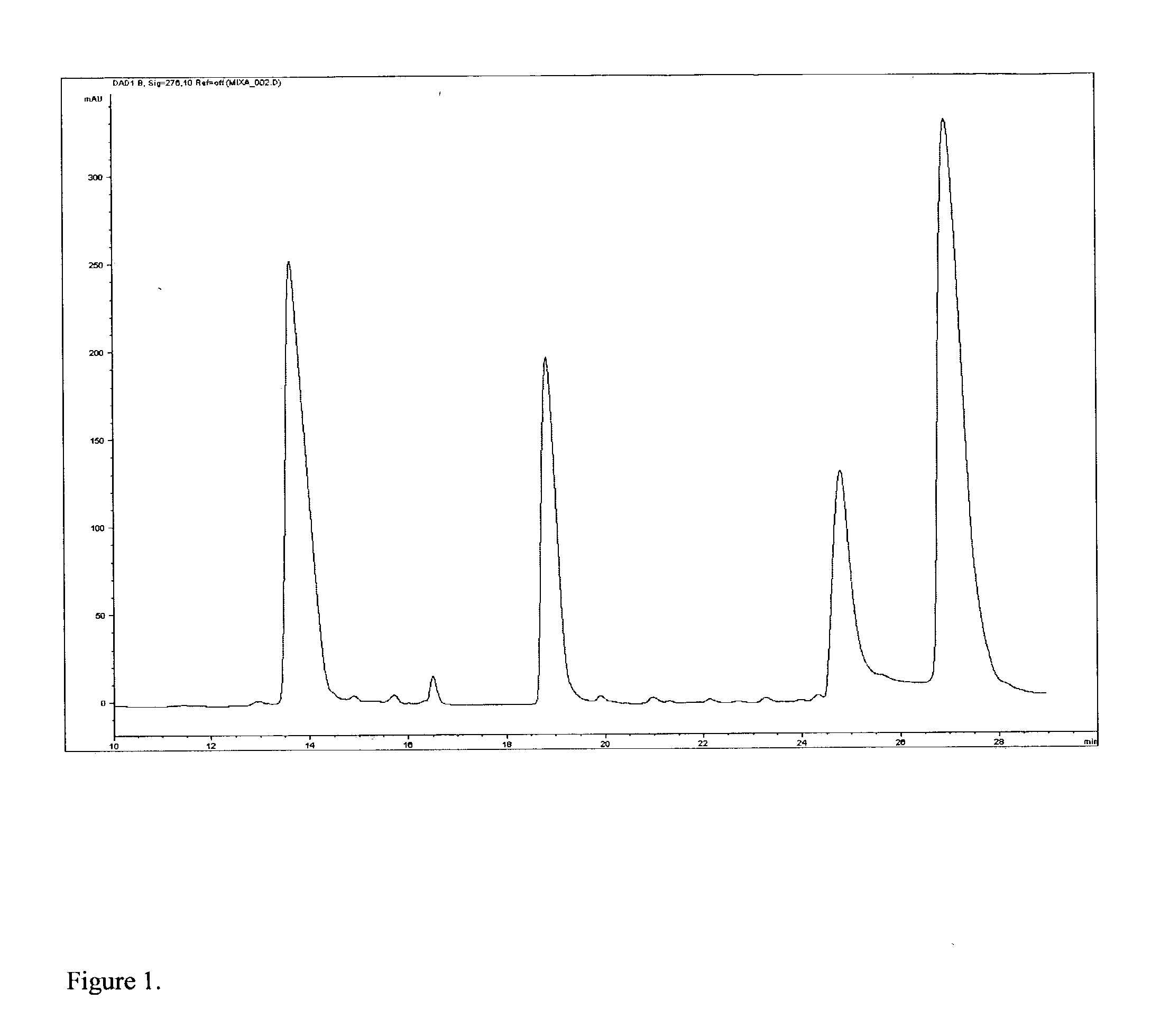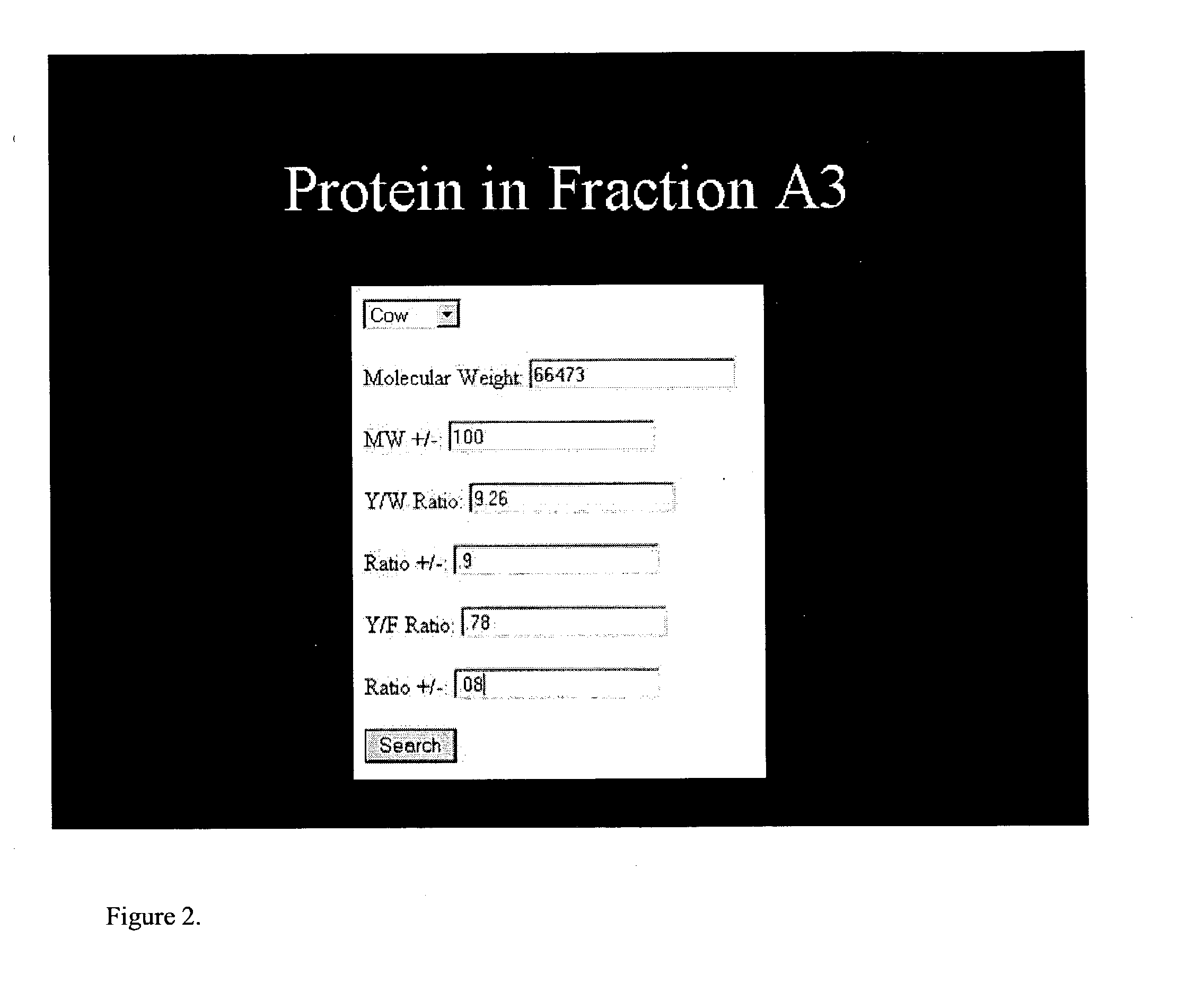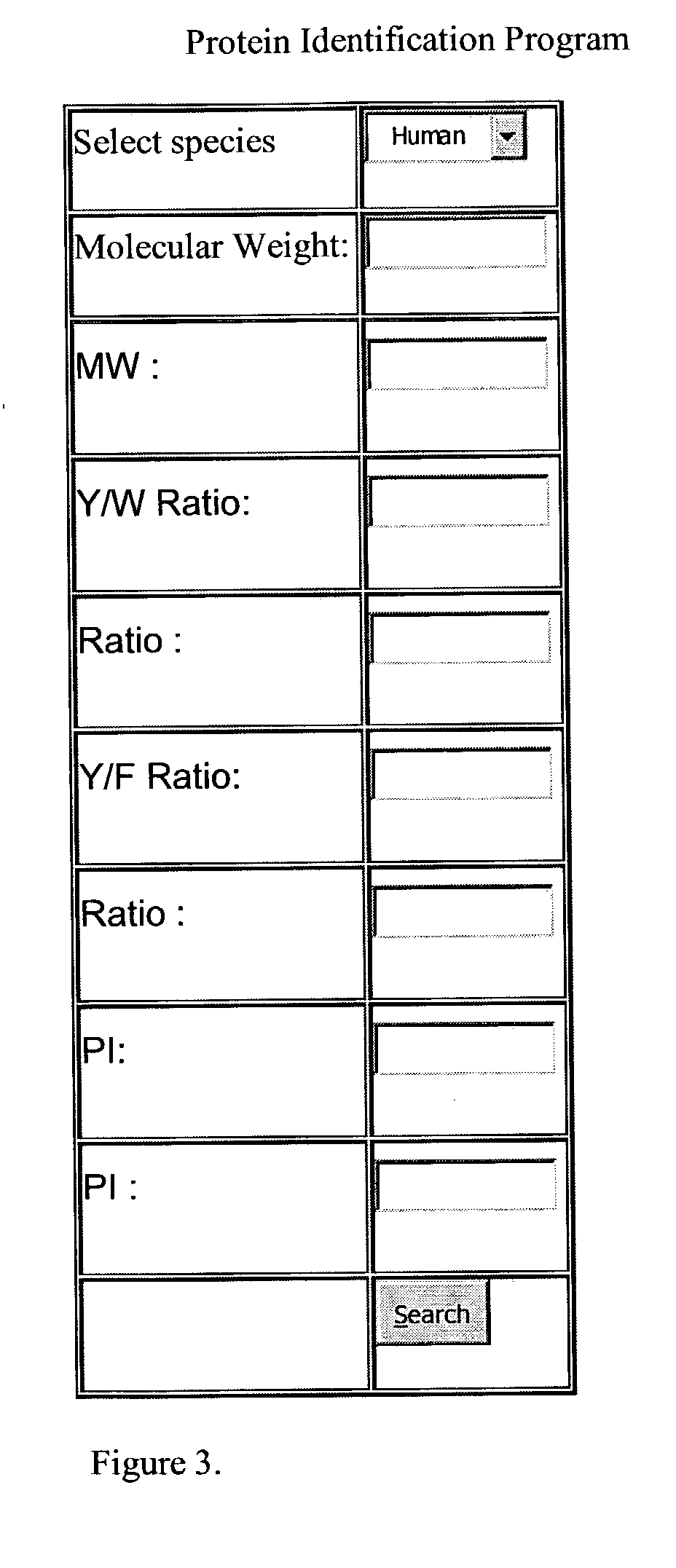Identification of proteins using a physical parameter and accurate amino acid content
- Summary
- Abstract
- Description
- Claims
- Application Information
AI Technical Summary
Problems solved by technology
Method used
Image
Examples
example 1
[0035] Protein Identification
[0036] One application of the invention is the identification of proteins in a mixture, which are separated by reverse phase HPLC. To assess the method's usefulness, the inventors made a mixture of four bovine proteins, purchased from the Sigma Chemical Company (St. Louis, Mo.):
[0037] 1) Albumin
[0038] 2) Carbonic anhydrase II
[0039] 3) Methionine enkephalin
[0040] 4) Ribonuclease
[0041] Equal volumes of each protein (1 mg / ml dissolved in phosphate buffered saline) were mixed together. A sample was applied to a reverse phase column (Vydac 218TP5205 from Grace Vydac (Columbia, Md.)). The proteins were eluted by a linear gradient of acetonitrile. Four peaks were observed in the chromatogram, and these were collected in separate tubes of 100 microliters. See FIG. 1.
[0042] Half of a microliter of the solution was used to estimate molecular weight by MALDI-TOF mass spectrometry. The remainder of the fraction was dried, re-dissolved in 20 microliters of 6M guanidi...
example 2
[0046] Identification of a Purified Protein Using the Amount of Cysteine and Glutamic Acid
[0047] A protein is purified that has cysteine and glutamic acid in it. The amount of cysteine (and any of the homologs of cysteine) and glutamic acid are determined following the methods of Liang et al. (Liang S. C., Wang H., Zhang Z. M., Zhang X., Zhang H. S., Spectrochim Acta A Mol Biomol. Spectrosc. Vol. 58(12), pp. 2605-11 (October 2002)) and Tcherkas et al. (Tcherkas Y. V., Denisenko A. D., J Chromatogr A., Vol. 913(1-2), pp. 309-13 (April 2001), respectively. The ratio of cysteine to glutamic acid is calculated and this ratio is combined with a physical parameter, such as the isoelectric point or intrinsic viscosity and input into the Swiss-Prot database following the procedure as enumerated below in Example 3.
example 3
[0048] Design of Computer Program for Accessing Swiss-Prot Database.
[0049] Design and construction of maryquery: A database for protein identification.
[0050] A web-site interface was generated that allows the input of physical data related to a protein at the interface site. The interface uses information from a protein database to generate an output containing the uniquely identified protein. Please see http: / / www.ncbi.nlm.nih.gov / p-rojects / core_bio / core_home / cgi / maryguery.html. One embodiment of the interface site is represented in FIG. 2. In this embodiment, the user inputs data into the interface site by use of a mouse and typing in the physical parameters of the known parameters as well as uncertainty values into the interface site. Using the mouse and clicking on search will output the identity of the protein. It will be recognized by those of skill in the art that this is only one embodiment of the invention. One could conceive of additional physical parameters that could be ...
PUM
 Login to View More
Login to View More Abstract
Description
Claims
Application Information
 Login to View More
Login to View More - R&D
- Intellectual Property
- Life Sciences
- Materials
- Tech Scout
- Unparalleled Data Quality
- Higher Quality Content
- 60% Fewer Hallucinations
Browse by: Latest US Patents, China's latest patents, Technical Efficacy Thesaurus, Application Domain, Technology Topic, Popular Technical Reports.
© 2025 PatSnap. All rights reserved.Legal|Privacy policy|Modern Slavery Act Transparency Statement|Sitemap|About US| Contact US: help@patsnap.com



